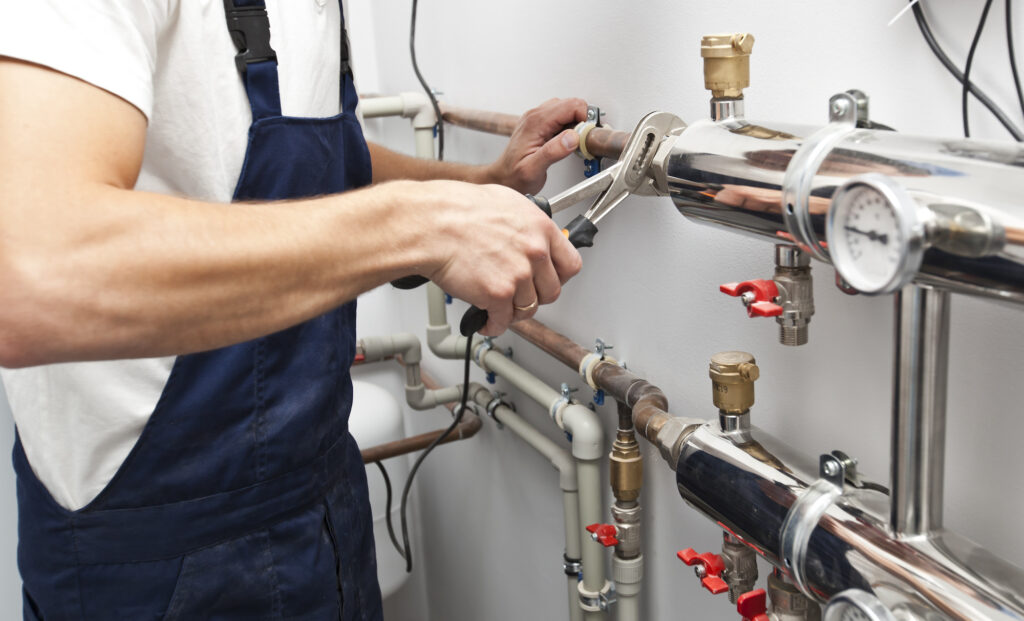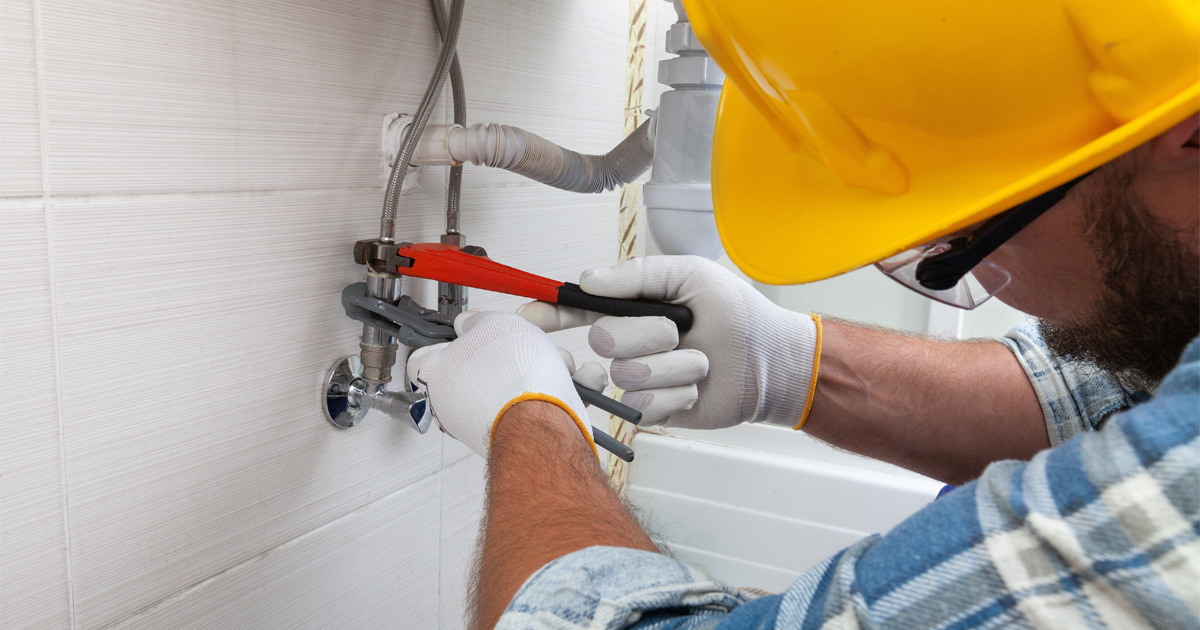Understanding the ABCs of Home Plumbing: A Beginner's Overview
Understanding the ABCs of Home Plumbing: A Beginner's Overview
Blog Article
Everybody maintains their own individual theory in relation to How Does the Plumbing Work in Your Home?.

Plumbing is an important facet of any home, responsible for supplying tidy water for alcohol consumption, food preparation, and bathing, in addition to removing wastewater safely. Comprehending the essentials of home plumbing is vital for every single homeowner to guarantee correct upkeep, troubleshooting, and, if required, repairs. In this newbie's overview, we'll cover the fundamental ideas of home plumbing to assist you end up being extra accustomed to exactly how it functions.
Water Heater
The water heating unit is accountable for home heating water for domestic usage, consisting of showering, cooking, and cleansing. Typical types of water heaters include tank-type water heaters, tankless (on-demand) hot water heater, and heat pump water heaters. The water heater is attached to the water system system and delivers hot water to plumbing fixtures as required.
Water drainage System
The water drainage system gets rid of wastewater from your home and carries it away to a sewage treatment center or septic tank. It contains a network of pipes, installations, and fixtures that transfer wastewater from plumbing fixtures to the main sewer line or septic system. Appropriate water drainage is vital to protect against clogs, back-ups, and sewer leakages.
Ventilation System
The air flow system helps maintain correct atmospheric pressure and avoid sewer gases from entering your home. Vent pipelines, additionally known as vent heaps, prolong from plumbing fixtures to the roof, enabling sewage system gases to get away safely outside. Ventilation pipelines likewise permit air to get in the drain system, helping with smooth wastewater circulation and protecting against suction or vacuum results.
Water System
The water system brings tidy water into your home from a metropolitan water source or an exclusive well. It includes a primary water line that links to your home's plumbing system, typically located underground. A water meter determines the amount of water taken in, while a shut-off valve permits you to manage the circulation of water into your home.
Plumbing Fixtures
Plumbing components are gadgets that provide water to numerous parts of your home and consist of sinks, faucets, toilets, showers, tubs, and appliances such as dishwashers and cleaning machines. Each component is connected to the water system system by means of pipes and fittings and may have its shut-off valve for upkeep or emergencies.
Usual Plumbing Devices
Having the right tools available is essential for performing fundamental plumbing repairs and maintenance tasks. Usual plumbing tools consist of flexible wrenches, pipe wrenches, pliers, pipe cutters, hacksaws, plungers, augers (or drain snakes), and Teflon tape. Having these tools readily available can help you tackle minor plumbing concerns effectively.
Standard Plumbing Repair Services
While some plumbing repair services may require specialist aid, lots of typical issues can be addressed with standard do it yourself strategies. Knowing how to take care of a leaky tap, unclog a drain, replace a bathroom flapper, or repair a dripping showerhead can conserve you money and time on plumbing repairs.
Conclusion
Recognizing the basics of home plumbing is important for every single property owner to preserve a secure, useful, and efficient plumbing system. By acquainting yourself with the water supply system, plumbing components, water drainage system, ventilation system, usual plumbing tools, and standard repair services, you can confidently address small plumbing issues and guarantee your home's plumbing system operates efficiently.
Plumbing for Beginners: A Comprehensive Guide
If you’re a beginner when it comes to plumbing, don’t worry; you’re not alone. Plumbing may seem intimidating, but with the right knowledge and a little practice, you can handle many common plumbing issues on your own. In this comprehensive guide, we will demystify the world of plumbing for beginners, providing you with the basic knowledge and skills needed to tackle common plumbing problems and even take on some DIY plumbing projects.
The Importance of Basic Plumbing Knowledge for Beginners:
First and foremost, basic plumbing knowledge gives you a solid foundation. It helps you grasp the key concepts and terminology that are essential in this field. By learning the basics, you’ll be able to build upon that knowledge and tackle more complex plumbing tasks in the future.
Having a basic understanding of plumbing also enables you to handle common issues that may arise in your home. Picture this: a leaky faucet or a clogged drain. With some basic plumbing knowledge, you’ll have the confidence to troubleshoot and fix these problems on your own. It saves you from unnecessary expenses and the hassle of waiting for a professional to arrive.
As a beginner, learning the basics of plumbing empowers you to take care of your own home. It gives you a sense of independence and self-reliance. You’ll no longer have to rely solely on professionals for every small issue that pops up. Instead, you can handle many tasks yourself, saving time and money in the process.
Remember, everyone starts as a beginner. Embrace the learning process and take small steps to expand your plumbing knowledge. There are plenty of online resources, tutorials, and even local workshops that talk about plumbing for beginners.
Essential Tools for Plumbing for Beginners
As you start your plumbing journey, having the right tools in your toolbox is crucial. Let’s explore some of the must-have tools:
Adjustable Wrench:
This versatile tool is a staple in any plumber’s toolbox. It allows you to tighten or loosen nuts and bolts of various sizes. Make sure to have an adjustable wrench with a comfortable grip.
Pipe Wrench:
A pipe wrench is specifically designed for gripping and turning pipes. It has serrated jaws that provide a strong grip, making it easier to loosen or tighten threaded pipes and fittings.
Plunger:
The plunger is a simple yet effective tool for clearing clogged drains and toilets. It creates suction when you push and pull, helping to dislodge blockages. Keep a good-quality plunger handy for those unexpected clogs.
Pipe Cutter:
When it comes to cutting pipes, a pipe cutter is your go-to tool. It creates clean, precise cuts without damaging the pipe. Look for a pipe cutter that can handle the pipe sizes you’re working with.
Hacksaw:
A hacksaw is useful for cutting through pipes, screws, and other materials. It’s a versatile tool that can handle different cutting tasks. Remember to use a blade suitable for cutting metal.
Tape Measure:
Accurate measurements are crucial in plumbing. A tape measure allows you to measure pipe lengths, distances, and dimensions accurately. Opt for a sturdy tape measure that extends a good length.
Pliers:
Pliers come in handy for various tasks, such as gripping, bending, and cutting. Slip-joint pliers with adjustable jaws are great for gripping pipes, nuts, and bolts.

Do you really like more info about ? Leave feedback directly below. We'd be pleased to know your reactions about this post. We are looking forward that you come back again in the future. Are you aware of anybody else who is fascinated with the niche? Be sure share it. I praise you for your time. Come back soon.
More Details Report this page